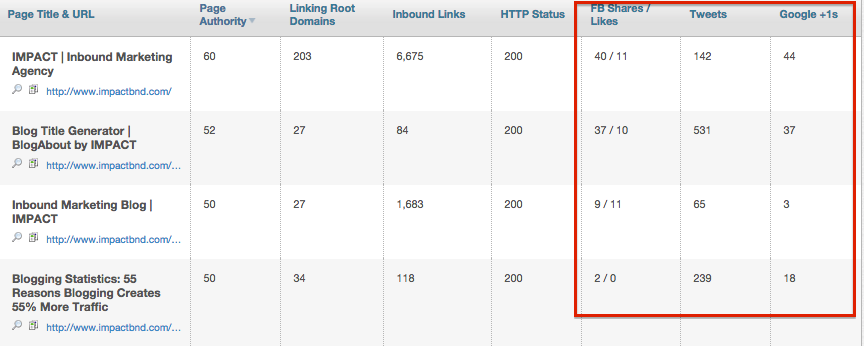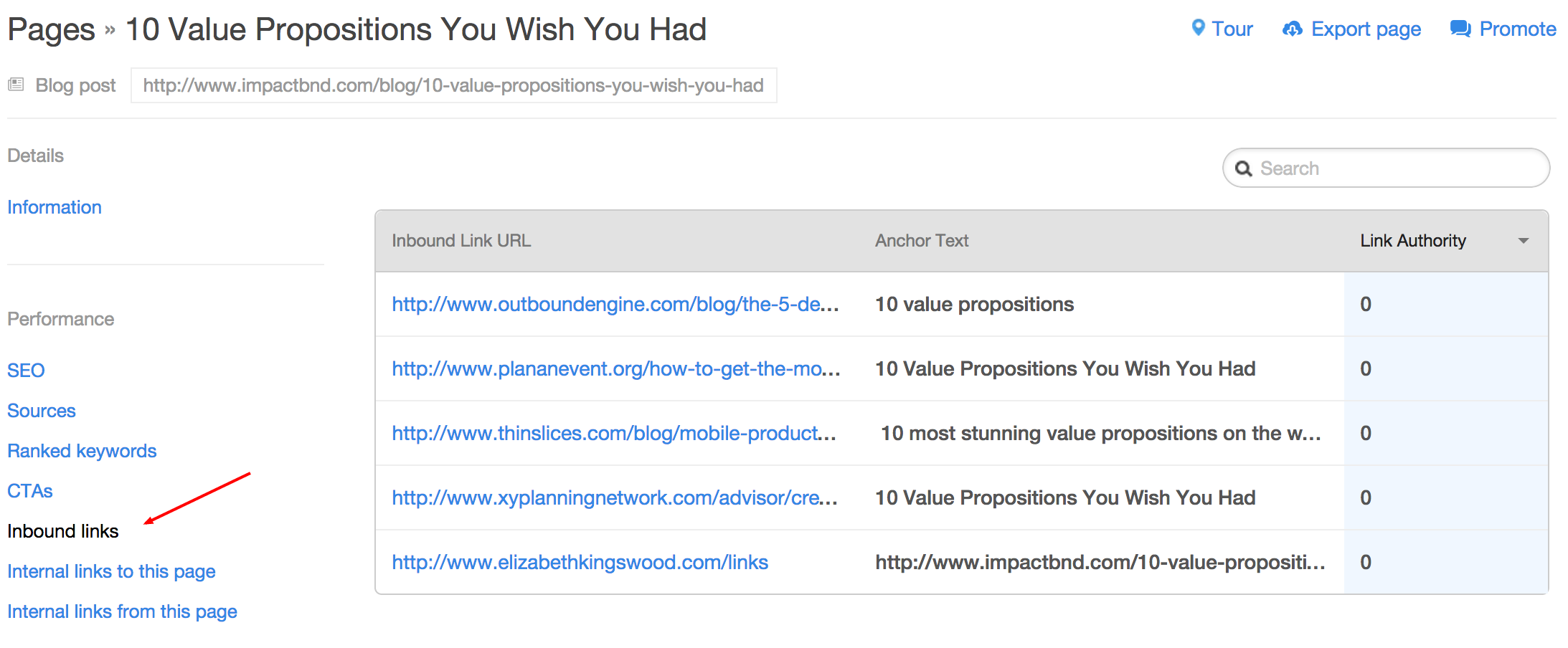Join 40,000+ sales and marketing pros who receive our weekly newsletter.
Get the most relevant, actionable digital sales and marketing insights you need to make smarter decisions faster... all in under five minutes.
 Blogging can feel a bit like a self-fulfilling prophecy at times, am I right?
Blogging can feel a bit like a self-fulfilling prophecy at times, am I right?
Does this sound like you?
“I know this topic will do well.”
Sure it does. Sounds like me, too.
Following intuition like this is fine, it’s only when it isn’t followed up with analysis that we find ourselves in trouble. It’s how bad habits form, and before you know it, we’re blogging for ourselves rather than our intended audience.
The challenge isn’t so much measuring our efforts, as there are enough tools out there that make this easy. It’s more about knowing what to measure, how to do it, and most importantly, what to do with the data once it’s been uncovered.
The focus here is to let you in on what we measure most frequently, and perhaps most interesting to you, the tools that allow us to do so.
The blogging metrics you should measure
Clicks
This one is pretty obvious, but believe it or not many “experts” refer to clicks as a vanity metric, as the only thing that should matter is leads generated and revenue earned.
Sure. But in order to ensure both, you also need people to find and engage with your content.
Clicks provide marketers with direction. While it is surface level and involves deeper analysis to learn who is clicking and from where they’re clicking, clicks are the greatest indicator that your topics are resonating with your audience.
How to measure it: Clicks are pretty easy to measure, and as a result, a variety of analytical tools will do the trick. For greater insight, we use HubSpot, a marketing automation software that gives us greater intelligence into where specific clicks are coming from, and who exactly is clicking. This drives marketing action for creating more of the right content for the right people.
How often: Starting on its publish date, measuring clicks for any blog post should be a continuous process. There is unique intelligence to be gathered throughout the life of any blog post. For instance, clicks on or around a publish date give you insight into how well your post resonated with your mailing list. Clicks several weeks or months later will give you insight into how well your post is performing in search engines.
Social shares
While it’s true that social shares don’t pay the bills, they are a direct indicator of the level in which people find your content helpful.
The psychology behind social sharing is interesting, as often people share things for three reasons:
-
It will make them look smarter
-
They found it helpful
-
It will be helpful to others
Great content (this is where you come in) achieves all three, and as a result, has readers spreading your content in a way that you cannot: through word-of-mouth.
Action is measurable through referral clicks, but the amount of people that simply see your content or company name and store it for a later date is not. This is why many marketers denounce social sharing as a true indicator of future business success.
Referral marketing may be harder to track and measure, but it doesn’t make it any less important. Social shares matter. Just like clicks, the real value comes from digging deeper into the data to determine the “Who? Where? and Why?"
How to measure it: Among the many social analytics tools that Moz offers, Open Site Explorer is the most effective for measuring the volume of social shares any specific page or blog post on your website is generating. Moz Pro users have unlimited access, so it requires an investment, but the level of intelligence goes far beyond social analytics, and is therefore worthy of consideration for allocating some budget.

How often: Any weekly marketing meeting should review the level of engagement your previous weeks work has earned. Like clicks, this will be a continuous process that will evolve over time, but keeping your finger on the social pulse on a daily and weekly basis will ensure your efforts are staying the course.
Inbound links
It’s pretty surprising that we’ve made it this far without mentioning SEO. (You didn’t think we’d actually glance over this, did you?)
Like clicks and social shares, inbound links are an indicator that others have found your content helpful enough to link to it on their own website. Good news for referral traffic, even better news for your SEO efforts.
Inbound links directly affect your page authority, which in turn affects how high your content ranks in search engines.
The more inbound links a blog post has, the higher page authority. The higher the page authority, the higher you’ll rank in search engines.
How to measure it: As previously mentioned, Moz’s premium subscription offers these types of analytics in spades. We use HubSpot, which allows us to view detailed analytics of each specific blog post we publish, including inbound links, where they’re coming from, and even what the anchor text is.

How often: Inbound links can take time to receive, therefore you should continually check back with your older posts to see how they’re performing. Don’t be afraid to go for the ask either. Email influencers in your industry to see if they find your content helpful, and if they have a need, give them full permission to link to your content on their website.
Revenue
Finally, the metric that really matters. Because a successful content strategy is one aligned with its overall business objectives, it goes without saying that tracking all revenue back to the content that generated it is paramount in ensuring a profitable strategy moving forward.
This is much easier to measure if your blog posts are aligned with the premium content like ebooks that have proven to generate business in the past.
In other words, your blogging strategy should be campaign based, not dependent on one-off posts that satisfy whatever topic you feel like covering.
How to measure it: HubSpot’s Campaigns tool allows us to easily track all engagement around specific content and any revenue generated from it. This helps from not only a marketing standpoint, but also sales, as it provides consultants with data on the content that closes deals.
How often: This is completely dependent on your product/service offering and the typical length of your sales cycle. For ecommerce websites, this might be something you track on a daily basis. Companies with a service based offering with a longer sales process may evaluate earnings on a monthly basis.
Driving more traffic
Obviously before you measure anything, you need to start generating more traffic and engagement through your existing content to identify what works and what closes business. Fill out the form below to access our guide on driving more relevant website traffic.
Free Assessment:

